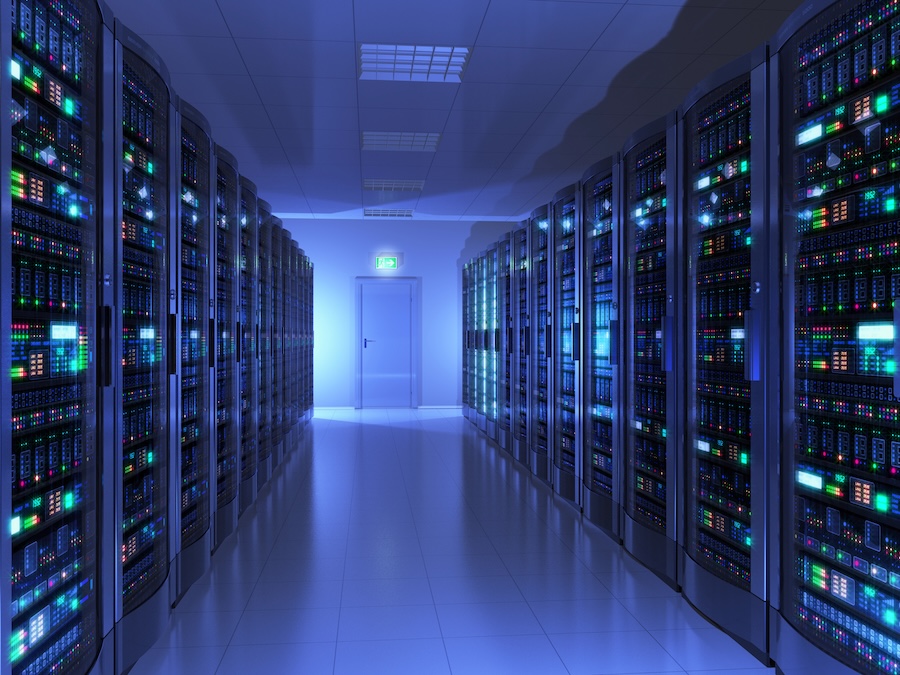AI is the technology of the decade. From AI-generated memes and videos to AI personal assistants in your social media, AI is everywhere nowadays!
You probably saw the worrying statistics about the amount of electricity each AI interaction consumes. And how much water is required to keep the servers cool in the huge AI data centers. Now there’s a new environmental concern: AI could lead to a significant increase in PFAS pollution.
What is a data center?
Traditional cloud services require thousands of servers to run. These servers are similar to a desktop PC on steroids but without the high end graphics capabilities. Servers are generally shaped like wide pizza boxes and are stacked in racks (often 40 servers per rack). In turn, these racks are grouped into clusters consisting of tens of thousands of servers. These clusters are then stored in massive warehouses we call data centers.
Why do data centers use so much power?
Data centers need significant amounts of cooling since all the servers are packed so close together. Thus they need large amounts of water and electricity to power their HVAC systems. In addition, the servers themselves are enormously power hungry. Each CPU may only consume 100s of Watts, but when you have millions of CPUs, you quickly reach power consumption figures comparable with a large town!
How are AI data centers different?
AI needs significantly more powerful computers than other cloud services. In fact, AI models can’t really run on normal processors. Instead, they use huge arrays of GPUs (the specialist processor at the heart of a graphics card) which are better at running the massively parallel computations used by AI. As any gamer will know, GPUs run really hot and are super power-hungry. As a result, AI data centers need far greater amounts of cooling than traditional ones. They also use way more electricity—a recent Nvidia blog talked of the era of the Gigawatt data center. For context, that is the sort of power needed for a million normal households. Multiply that across hundreds of AI data centers and it becomes a significant proportion of global power consumption.
How are AI data centers cooled?
Typically, AI data centers use full blown refrigeration systems to cope with the huge amounts of heat. These refrigeration systems are filled with f-gases, fluorine-based gases that are pretty nasty if they escape into the atmosphere. Of course, data center operators do everything they can to prevent leaks, since that leads to downtime and expense. However, invariably accidental leaks can and do happen.
Once f-gases combine with air, they can form a compound called TFA (Trifluoracetic acid) which in many countries is viewed as a damaging PFAS compound. There is growing evidence that TFA pollution levels are rapidly increasing globally. And studies link TFA with all sorts of health effects just as with other PFAS compounds. Also, as you may remember, f-gases are pretty bad for the ozone layer (remember all the fuss about CFCs?!)
How else does AI drive PFAS pollution?
All semiconductors (such as CPUs or GPUs) require significant amounts of PFAS during their production. Moreover, the resulting chips often contain high levels of PFAS that are then released when the servers are decommissioned. As a result, both AI and normal data centers generate a lot of PFAS pollution during the manufacturing process AND when they are decommissioned.
The problem is, AI data centers are chasing Moore’s Law. This long-held maxim of computing means that essentially processors double in capability every 18-24 months. Given the requirements of AI models, this means that the GPUs they rely on may only last a few years before they are obsolete. Added to this is the fact that prolonged heavy loads rapidly degrade processors. So, some analysts reckon GPUs in AI data centers may only last a year or two.
What can we do about this?
As individuals, there’s really not much we can do about this issue. We can reduce the number of AI queries we make, and try to make every query count by learning how to get better at creating prompts. We can persuade our kids not to jump on every AI bandwagon like the Open AI Sora video generator (reckoned to be the driving force behind their recent deal for an additional 10GW of power capacity).
What we can also do is reduce our own PFAS exposure and limit our impacts on the environment. That means measuring your PFAS levels, avoiding PFAS exposure through things like fast food packaging, and generally trying to lead healthy lifestyles that reduce the impact of PFAS on us and our environment.



